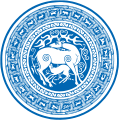Authorisation

Investigation of the Metal-Dielectric Structures using Method of Auxiliary Sources
Author: Veriko JeladzeCo-authors: V. Tabatadze, I. Petoev, R. Zaridze
Annotation:
The motivation of this work is to study the electrodynamic properties of the complex materials and to determine whether it is possible to artificially produce the complex materials with desired properties, which will work in the desired frequency range. Generally, the complex material represents the artificial substance, which consists of admixtures and its electrodynamic properties differs from admixtures properties. Artificial complex material can be created if we embed the three-dimensional periodic lattice consisting of conducting elements in ordinary dielectrics. The goal of this work is to investigate the properties of such metal–dielectric structures (chirality, negative refraction and etc.) using computer simulation and their theoretical analysis. The finite periodic structure (lattice with resonator elements) embedded in ordinary dielectric is considered in this research. There are presented the theoretical basis for problem solution. The main aim was to study such periodic structures at resonant frequencies, when they have the properties of a complex materials. Several different wire shapes (two concentric split rings, Ω-shaped, right or left handed helix) of lattice elements were considered. Even in case of low elements number a negative refractive index and chirality were observed. For some cases optimal parameters were specified to get a flat or a directed pattern. The simulations were carried out by means of the MAS. The method of auxiliary sources (MAS) makes it possible to efficiently solve electromagnetic wave diffraction and scattering problems by periodic structures located inside dielectric.
Lecture files:
მეტალო–დიელექტრიკულ სტრუქტურების გამოკვლევა დამხმარე გამომსხივებლების მეთოდით [ka]
